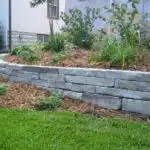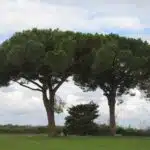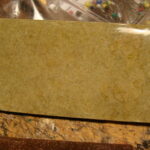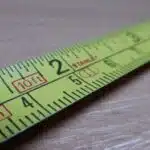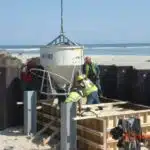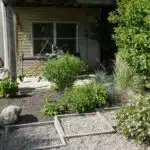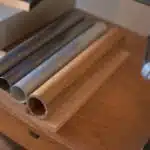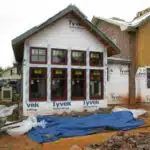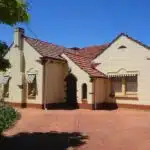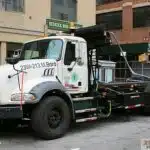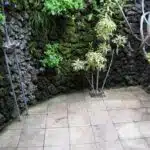As a crushed stone expert, I am often asked the question, “How much crushed stone do I need?” This is a crucial question to ask when planning any landscaping or construction project that requires the use of crushed stone. The amount of crushed stone needed will depend on several factors, including the size and scope of the project, the type of stone being used, and the depth at which it will be laid.
Calculating the amount of crushed stone needed for a project can seem daunting at first glance. However, with some basic knowledge and careful calculations, anyone can determine how much crushed stone they need for their specific project. In this article, we will explore the key factors that go into determining the amount of crushed stone needed and provide you with a step-by-step guide to calculating your own needs. By understanding these key factors and using our guide, you’ll be able to confidently plan your next landscaping or construction project with ease.
Understanding The Purpose Of Crushed Stone
Crushed stone is a versatile and widely-used material that has numerous benefits for landscaping and construction purposes. It comes in a variety of sizes, textures, and colors, making it perfect for use in gardens, pathways, driveways, and even as a base material for construction projects. One of the primary benefits of crushed stone is its ability to provide excellent drainage properties. This makes it ideal for use in areas where water tends to accumulate or where soil erosion is a problem.
Another benefit of crushed stone is its durability. Unlike other materials like wood chips or mulch, crushed stone can withstand heavy foot traffic and harsh weather conditions without deteriorating quickly. This makes it an excellent choice for high-traffic areas such as walkways or parking lots. Additionally, using crushed stone can help control weed growth naturally since it restricts sunlight from reaching the soil.
There are various types of crushed stone available on the market today, each with its unique qualities and uses. Some common types include limestone, granite, trap rock, and gravel. Limestone is commonly used in landscaping projects due to its natural beauty and affordability. Granite is popular among homeowners who want a more upscale look for their property while also providing excellent durability. Trap rock is often used as an aggregate in concrete production due to its high strength properties. Gravel has excellent drainage properties making it ideal for use in drainage systems.
Moving forward into the next section about ‘types of crushed stone,’ we will delve into each type’s characteristics and specific uses depending on your project needs.
Types Of Crushed Stone
Crushed stone is a versatile material that has many uses in construction, landscaping, and other industries. It is made by crushing large stones into smaller pieces and can be used for everything from driveways to drainage systems. One of the most common uses for crushed stone is as a base material for roads, walkways, and patios. It provides a stable foundation and helps to prevent erosion.
There are many different colors of crushed stone available, which allows for a wide range of design options. Some of the most popular colors include gray, brown, red, blue, and green. The color of the stone can be used to complement or contrast with the surrounding landscape or architecture. For example, using red crushed stone in a garden bed can add vibrancy and warmth to the space.
When selecting crushed stone for a project, it is important to consider both the intended use and the desired aesthetic effect. Different types of crushed stone have different properties that make them more suitable for certain applications than others. For example, limestone is often used as a base material because it compacts well and drains easily. Granite, on the other hand, is a more decorative option that can add texture and visual interest to outdoor spaces.
- Crushed stone is commonly used as a base material for roads, walkways, and patios.
- There are many different colors of crushed stone available including gray, brown, red, blue, and green.
- Different types of crushed stone have different properties that make them more suitable for certain applications than others.
- Consider both the intended use and desired aesthetic effect when selecting crushed stone for your project.
As an expert in crushed stone materials, understanding how they will be utilized by my clients is crucial in order to ensure their satisfaction with the finished product. Popular uses aside from road bases are as decorative elements such as garden beds or pathways that provide both practicality with an added design element to any outdoor space. When discussing design options with my clients, I always take into account the different colors of crushed stone that are available and how they can complement or contrast with the surrounding environment. Ultimately, the choice of which type of crushed stone is used should be made with attention to detail and visual appeal while also being mindful of practical considerations.
Transition: While the aesthetic value of using crushed stone is undeniable, it is equally important to consider its practical benefits when selecting materials for a project. In the following section, we will explore some of the many benefits that come with using crushed stone in construction and landscaping projects.
Benefits Of Using Crushed Stone
The use of crushed stone in construction projects offers cost savings over other materials. It is cost-effective and provides a durable surface for roads, driveways, patios and walkways. Crushed stone also offers a natural aesthetic that can enhance the look of any landscaping project. It is also very low-maintenance and can last for many years with minimal upkeep.
Cost Savings
Calculating the amount of crushed stone needed for a project is vital in ensuring that costs are kept under control. As an expert in crushed stone, I recommend exploring cost-effective options and budget-friendly strategies to maximize savings. One way to save on costs is by purchasing the material in bulk. Buying in bulk allows you to take advantage of discounts and reduces transportation expenses.
Another cost-saving strategy is to properly plan the project ahead of time. This includes accurately measuring the area that needs to be covered with crushed stone and factoring in any necessary depth requirements. A well-planned project will prevent overbuying or underbuying, both of which can lead to unnecessary expenses. It’s also important to compare prices from various suppliers before making a purchase.
Finally, considering alternatives to traditional crushed stone can also be a budget-friendly option. For example, recycled concrete aggregate can be used as a substitute for natural crushed stone without sacrificing quality or durability. As an expert in this industry, I strongly encourage individuals and businesses alike to explore all cost-effective options when planning their next project’s crushed stone needs. By doing so, they can enjoy significant cost savings without compromising on quality or performance.
Durability
When considering the benefits of using crushed stone for various projects, durability considerations play a crucial role. Durability refers to the ability of a material to withstand wear and tear, weather conditions, and other environmental factors without losing its strength or appearance. Crushed stone is known for its excellent durability qualities, making it an ideal choice for many applications.
When choosing a material for a project, it’s essential to consider its environmental impact. Fortunately, crushed stone is an eco-friendly option that can be sourced locally in many areas. Unlike other materials that require significant energy inputs and resources to extract and transport, crushed stone can often be produced from recycled materials or byproducts of other industries.
Overall, the combination of durability considerations and eco-friendliness make crushed stone an attractive option for various projects. Whether you’re building a driveway or road, constructing a patio or retaining wall, or landscaping your property with decorative stones, the benefits of crushed stone are clear. As experts in this field, we encourage individuals and businesses alike to explore all their options carefully before making a final decision on which material to use.
Determining The Size And Scope Of Your Project
As we have discussed earlier, crushed stone has numerous benefits that make it a popular choice for various construction projects. However, before you start your project, you must determine the size and scope of your undertaking. Knowing these details will help you estimate the amount of crushed stone needed and plan accordingly.
One crucial factor to consider when determining the size and scope of your project is your project budget. You must allocate enough funds to purchase the required materials and hire professionals if necessary. When it comes to material options, crushed stone is available in various sizes and types, so selecting the right one is essential. The type of crushed stone you choose will depend on factors such as its intended use, location, and personal preference.
Once you have determined your project’s size and scope and selected the right type of crushed stone for your needs, you can proceed to measure the area to be covered. Measuring accurately is important since it will impact how much crushed stone you need to purchase. To measure correctly, use a tape measure or measuring wheel to determine the area’s length and width. Then multiply these measurements together to calculate the total square footage of the area. With this information in hand, you can now confidently estimate how much crushed stone you need without overspending or underestimating your requirements.
Measuring The Area To Be Covered
Many people make the mistake of assuming that measuring the area to be covered is an easy task. They think it’s as simple as measuring the length and width of the area and multiplying them together. However, this approach can lead to inaccurate measurements and ultimately result in purchasing too much or too little crushed stone.
Measuring accuracy is crucial when it comes to calculating the amount of crushed stone needed for a project. One common mistake people make is not taking into account any irregularities in the shape of the area. For example, if there are curves or angles in the area, simply measuring length and width won’t give an accurate measurement. Instead, it’s important to break down the area into smaller sections and measure each one separately.
Another mistake people make is forgetting to factor in any depth requirements for their project. To ensure you purchase enough crushed stone, you need to know how deep you want your coverage to be. This will require taking measurements at multiple points throughout the area to get an average depth measurement.
To accurately measure the area to be covered with crushed stone:
- Break down irregularly shaped areas into smaller sections.
- Take measurements at multiple points throughout each section.
- Factor in any depth requirements for your project.
- Double check all measurements before making your final calculations.
Now that we’ve covered measuring accuracy and common mistakes, let’s move on to calculating the volume of crushed stone needed for your project.
Calculating The Volume Of Crushed Stone Needed
Calculating the Volume of Crushed Stone Needed Calculating accuracy is crucial when determining the volume of crushed stone needed for a project, as underestimating or overestimating can lead to costly mistakes. To calculate the volume, it is necessary to determine both the length and width of the area in feet and multiply them to find the square footage. The depth of coverage required must also be determined, usually measured in inches. This measurement should then be converted to feet by dividing by 12. Once these measurements are determined, multiplying the square footage by the depth in feet will give you the cubic footage required.
Common mistakes when calculating the volume of crushed stone needed include failing to accurately measure both length and width, neglecting to convert measurements into feet or inches, and forgetting to account for any slopes or curves in your project area. Additionally, it’s important to remember that crushed stone often settles after being laid down initially, meaning that a slightly higher volume may be necessary than originally calculated. To ensure accurate calculations and avoid costly errors, double-check all measurements and consider consulting an expert or using an online calculator.
Now that you have calculated the cubic footage required for your project, it is essential to understand how this translates into cubic yards – a standard unit of measurement used by suppliers. To convert cubic feet into cubic yards, simply divide your total cubic footage by 27. This conversion factor works because there are 27 cubic feet in one cubic yard. It’s important not to overlook this step when ordering materials from suppliers as they typically quote prices per cubic yard rather than per cubic foot. By ensuring you have accurate calculations and converting correctly between units of measurement, you can guarantee a successful project outcome without overspending on materials unnecessarily.
Converting Cubic Feet To Cubic Yards
As the old adage goes, “measure twice, cut once.” This saying is especially true when it comes to calculating the amount of crushed stone needed for a project. While it may seem like a simple task, there are several factors to consider before making a purchase. One important factor is converting cubic feet to cubic yards.
To convert cubic feet to cubic yards, there are four steps to follow:
- Multiply the length by the width by the depth in feet to find the volume in cubic feet.
- Divide the volume in cubic feet by 27 (the number of cubic feet in one cubic yard) to find the volume in cubic yards.
- Round up to the nearest whole number if necessary.
- Add 10-15% extra for waste and irregularities.
Another important factor is converting metric measurements to imperial units. Many manufacturers list their crushed stone products using metric measurements such as millimeters or centimeters. To convert these measurements to inches or feet, divide by 25.4 (the number of millimeters in one inch) or multiply by 0.39 (the number of inches in one centimeter). These conversions will ensure that you have accurate measurements when calculating how much crushed stone you need.
When accounting for depth of crushed stone, it’s important to remember that different projects require different depths of coverage. For example, a driveway may only require a depth of 2-3 inches while a garden path may require a depth of 4-6 inches. To calculate how much crushed stone you need based on depth, use this formula: length x width x desired depth (in feet) = total cubic feet needed. From there, follow the steps above for converting to cubic yards and adding extra for waste and irregularities.
By following these guidelines and taking into consideration all factors including conversion rates and desired depth, you can accurately calculate how much crushed stone you need for your project. Converting cubic yards to tons and other advanced calculations may be necessary for larger projects, but with these basic steps, you can confidently purchase the right amount of crushed stone for your needs.
Accounting For Depth Of Crushed Stone
When considering the depth of crushed stone for a project, it is important to factor in the desired depth of coverage as well as compaction rates. Estimating the volume of crushed stone needed for a project can be done by multiplying the volume by the coverage and compaction rate. Further accuracy can be achieved by calculating the area in square feet of the project and then multiplying it by the desired depth. Finally, the total volume of crushed stone can be divided by the density of the stone to calculate the total tonnage needed for the project.
Factoring In Depth
When calculating costs for crushed stone, it is crucial to factor in the depth of the material. The depth determines the amount of material needed and plays a significant role in determining the overall cost. To calculate the depth, measure from the surface to where you want the crushed stone to be placed. It is important to note that adjustments for density should also be factored in when measuring depth.
Adjusting for density is necessary because different types of crushed stone have varying densities. This means that a specific volume of one type of crushed stone may weigh more or less than another type. When determining how much crushed stone is needed based on depth, it is essential to consider these differences and adjust accordingly. Calculating the final amount required takes into account both depth and density.
When accounting for depth, it’s important to remember that a thicker layer of crushed stone does not necessarily mean better quality or performance. In fact, an excessive thickness can lead to unnecessary costs while providing no added benefits. Instead, focus on achieving the desired level of coverage without exceeding what’s necessary. By doing so, you’ll be able to optimize your budget while ensuring optimal performance from your crushed stone application.
Estimating Volume Of Stone Needed
When accounting for the depth of crushed stone, it is essential to determine how much material is needed. Estimating the volume of stone required will enable you to gauge the cost of using crushed stone for landscaping purposes accurately. The amount of crushed stone needed can be determined by multiplying the area’s square footage by the desired depth in feet.
Calculating the volume of crushed stone required involves some basic math. First, you need to measure the area where you want to place your crushed stone application, such as a driveway or garden bed. Next, multiply the length and width measurements in feet to obtain the square footage. To calculate the volume of crushed stone required, multiply the square footage by the desired depth in feet. This calculation provides an estimate of how much material is needed for your project.
It is important to remember that estimating costs for crushed stone requires accuracy and attention to detail. An incorrect estimate can lead to unnecessary expenses and delays in completing your project. By accurately estimating both depth and volume, you’ll be able to budget effectively while ensuring optimal performance from your crushed stone application.
Adjusting For Compaction
Compaction techniques are essential when dealing with crushed stone. It is important to understand that the volume of crushed stone needed may vary depending on the compaction rate. Compaction refers to the process of compressing a material, in this case, crushed stone, to reduce its volume and make it more stable.
Potential issues may arise if proper compaction techniques are not applied. A poorly compacted crushed stone can lead to uneven surfaces or even failure of the entire project. A well-compacted crushed stone will prevent soil erosion, improve drainage, and increase load-bearing capacity. It is crucial to use a vibratory plate compactor or a roller compactor for better results.
Benefits of compacted crushed stone include improved stability, increased resistance to wear and tear, and reduced maintenance costs. When properly compacted, the surface becomes very firm and stable hence preventing cracking and sinking from heavy loads. Additionally, it requires less maintenance since it does not easily erode or shift out of place.
It is important to note that before purchasing your crushed stone, you should consider delivery and transportation costs as they may add up significantly. The cost of delivery varies depending on your location and distances involved. However, some suppliers offer discounts for bulk purchases or free delivery for certain quantities ordered. Therefore, always ensure you factor in all the costs involved before making a purchase decision.
Considering Delivery And Transportation Costs
After determining the amount of crushed stone needed for a project, it is important to consider the delivery and transportation costs. According to industry data, the cost of delivery can vary greatly depending on distance and quantity ordered. On average, delivery costs account for approximately 10-15% of the total cost of crushed stone.
Factors affecting delivery costs include location, accessibility, and type of truck used to transport the material. If a project site is located in a remote area with limited road access, it may require specialized equipment or multiple trucks to deliver the material. In addition, smaller quantities ordered may result in higher delivery costs per ton compared to larger orders.
Comparing delivery options for crushed stone can help save money and time. Suppliers may offer different types of trucks or shipping methods that affect pricing and delivery times. For example, some suppliers offer flatbed trucks that can accommodate large quantities but may have longer lead times due to scheduling constraints. Others may provide dump trucks that offer quicker turnaround times but are limited in capacity.
Choosing a supplier for your crushed stone involves considering not only price but also reliability and quality of service. It is important to research potential suppliers by reading online reviews or asking for references from past customers. Additionally, verifying that a supplier has appropriate licenses and insurance can help ensure that they are reputable and trustworthy. By carefully weighing all factors when choosing a supplier, customers can ensure they receive high-quality crushed stone delivered at an affordable price point.
Choosing A Supplier For Your Crushed Stone
Finding quality, affordable suppliers for crushed stone is key to ensuring that your project runs smoothly and within budget. One of the first steps in finding a supplier is to do some research. Look for companies that have a good reputation in the industry and are known for providing high-quality products. You can also ask other contractors or builders in your area for recommendations.
Once you have a list of potential suppliers, it’s important to compare prices and delivery options. Some companies may offer lower prices but longer delivery times, while others may charge more but provide faster service. Consider all of these factors when making your decision so that you can find the best balance between cost and convenience.
When comparing suppliers, don’t forget to take into account any additional services they may offer. Some companies may provide installation or landscaping services, which can be helpful if you’re working on a large project. Others may offer discounts or special promotions for repeat customers or bulk orders. Keep all of these factors in mind when choosing a supplier so that you can get the most value for your money.
- Research multiple suppliers before making a decision.
- Look for companies with good reputations.
- Compare prices and delivery options.
- Consider additional services offered.
- Take advantage of any discounts or promotions available.
Transition: Now that you’ve found the right supplier, it’s time to make sure you order the correct amount of crushed stone for your project.
Ordering The Correct Amount Of Crushed Stone
Proper preparation and planning are necessary for ordering the correct amount of crushed stone. Calculating costs and determining the right amount of material can be a daunting task, but with careful consideration and attention to detail, it can be done accurately. To start off on the right foot, measure your space in cubic feet or yards by multiplying length, width, and depth. This will give you an estimate of how much crushed stone you will need.
Overcoming measurement errors is crucial in ensuring that you order the correct amount of crushed stone. One common mistake is not accounting for depth correctly. Be sure to measure from the bottom of your project to the surface level where you want to lay down the crushed stone. Another error is not taking into account any curves or slopes in your project area. These can lead to underestimating or overestimating how much material you need.
Incorporating these tips into your planning process will help ensure that you order the correct amount of crushed stone for your project while avoiding unnecessary expenses. Remember, proper measurement techniques and careful calculations are key components in achieving this goal. By following these guidelines, you can have peace of mind knowing that your project will be completed successfully without any issues related to materials management.
Transitioning into preparing your site for crushed stone requires some foresight and preparation before moving forward with laying down any materials.
Preparing Your Site For Crushed Stone
Site preparation is crucial before laying down crushed stone. Proper grading considerations must be made to ensure that the site is level and there are no low spots that may cause water accumulation. This can lead to issues with drainage and erosion, which can negatively impact the longevity of the crushed stone installation.
Grading should involve removing any vegetation and debris from the site, followed by using a laser level or other grading tools to ensure an even surface. If necessary, fill in any low spots with additional soil or gravel to create a level base for the crushed stone. It’s important to take time during this process as it will directly impact the appearance and functionality of the final product.
Additionally, site preparation may also involve considering any underground utilities or obstacles that may impede installation. Taking these factors into account early on can prevent costly delays or complications later in the process. Proper site preparation lays a strong foundation for a successful crushed stone installation.
Moving forward with spreading and leveling crushed stone requires attention to detail and careful planning.
Spreading And Leveling Crushed Stone
After preparing your site for crushed stone, the next step is to spread and level the material. Spreading techniques vary depending on the type of crushed stone you choose. For example, if you are using angular stones, you will need to spread them in three layers: the first layer should be larger stones, followed by medium-sized stones, and then smaller stones on top. This layering will create a stable base that won’t shift or settle over time.
Once you have spread your crushed stone, it’s time to level it. Leveling tools such as a rake or a hand tamper can be used to ensure that the surface is even and smooth. Start by spreading out the material with a rake until it covers the entire area. Then use a hand tamper to press down on any high spots and fill in any low spots. Continue this process until the surface is completely level.
Properly spreading and leveling your crushed stone is crucial for creating a durable surface that will last for years to come. Taking the time to do this correctly will help prevent erosion and other problems down the road. In our next section, we’ll discuss some tips for maintaining your crushed stone surface so that it stays looking great for years to come.
Maintaining Your Crushed Stone Surface
Picture this: a serene and well-manicured crushed stone surface, providing a beautiful path or driveway for vehicles and pedestrians alike. As a crushed stone expert, it is essential to understand that achieving such perfection requires not only proper installation but also consistent maintenance.
Maintaining longevity of your crushed stone surface is crucial to ensure its continued beauty and functionality. One of the most important things you can do is to keep it clean. Remove any debris, leaves or sticks that may accumulate on the surface as they can cause damage if left unattended. Additionally, regular grading of the surface will help ensure that it remains level and free from areas where water can collect and erode the stone.
Preventing erosion is another important aspect of maintaining your crushed stone surface. Erosion can cause unsightly ruts or potholes, which not only detract from the appearance of your property but also pose a safety hazard for those walking or driving on it. To prevent this from happening, consider planting vegetation around the edges of the surface or installing a border made of pavers or other materials. This will help keep the stones in place while also adding an attractive element to your design.
In conclusion, maintaining a beautiful and functional crushed stone surface requires regular attention and care. By keeping it clean, grading it regularly, and preventing erosion through strategic landscaping elements, you can enjoy many years of safe use and enjoyment from your investment. Remember to consult with a professional if you have any questions about installation or maintenance techniques specific to your property’s needs.
Conclusion
Understanding the purpose of crushed stone is crucial before embarking on any project. Crushed stone serves various purposes, including as a base material for driveways and walkways, as well as for drainage systems. There are different types of crushed stone to choose from, each with unique characteristics that suit specific applications.
The benefits of using crushed stone include durability, affordability, and versatility. Determining the size and scope of your project is essential in calculating the amount of crushed stone required. Measuring the area to be covered accurately is also vital in determining the correct amount of material needed. Ordering too little can result in delays and additional expenses, while ordering too much can lead to unnecessary waste.
Preparing the site for crushed stone involves clearing any debris or vegetation and ensuring that the surface is level. Spreading and leveling the material evenly requires skill and precision to achieve a smooth surface. Maintaining your crushed stone surface requires regular maintenance such as adding more material when necessary and fixing any issues that may arise.
In conclusion, it’s important to remember that “measure twice, cut once,” which means taking the time to calculate how much crushed stone you need will save you time and money in the long run. As an expert in this field, I recommend seeking professional advice if you’re unsure about any aspect of your project. By following these guidelines mentioned above, you will achieve a durable and aesthetically pleasing crushed stone surface that will serve its intended purpose for years to come.
Image Credits
- “Chinese crushing stone, camp Petawawa. Ont., 1917. / Travailleurs chinois broyant de la pierre, Camp Petawawa 1917” by BiblioArchives / LibraryArchives (featured)


![Calculating How Much Stone Dust You Need 2 [Blog Post]Stone Dust © Oxfam Australia](https://green-life.blog/wp-content/uploads/2023/05/GdZVzgTqPhjq-150x150.jpg.webp)

